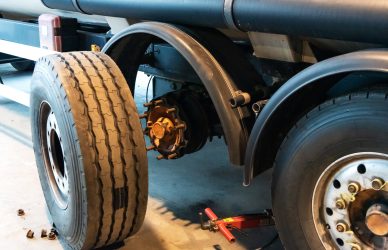If you asked 100 drivers what they want or what their carrier is missing, you might get 100 different answers. However, the more fleets understand what’s on drivers’ minds, the better equipped they will be to address any issues.
On April 10, the National Private Truck Council’s annual conference kicked off with a session including fleet executives who spoke on the challenge of understanding what drivers want. Their comments parallel the survey results of PDA, a firm focused on providing actionable data to companies and fleets.
Home time
“It’s not one thing that drivers want—not everybody wants the same thing—it’s no different than what you want out of life or what I want out of life. It’s probably a little bit different,” Scott Willert president of America’s Service Line, the private fleet for America’s Food Group, told FleetOwner. “The drivers dictate what they need from a home-time perspective. I have drivers that stay out for three months at a time, and I have drivers that are home every week. Then I have regional drivers that might be home every day.”
Compensation
Driver compensation has been increasing in trucking as fleets look to attract and retain drivers.
“Drivers, no matter if they’re for-hire or private fleet, they’re looking for pay then equipment, and home time,” said Keith Frantz, the U.S. Department of Transportation compliance manager for Archer Daniels Midland (ADM). “Our lanes are made for that. Our trade cycles are made for that. And now our compensation is.”
Frantz told FleetOwner that compensation is focused on the total package to include mileage or hourly pay rate, matching 401(k) program, health insurance and other benefits.
Average driver pay is climbing with many fleets paying $80,000 per year or more and many drivers making six figures. In surveying nearly 50,000 professional drivers, PDA found that compensation issues were the second top frustration for drivers in Q1 of 2022 as equipment breakdowns took the top spot. “Breakdowns are causing compensation issues – if a driver is consistently in the shop, they aren’t logging miles. If a driver isn’t logging miles, they aren’t earning what was promised,” PDA said in a press release. “Industry-wide pay raises are still going on; if a driver isn’t making what was promised, they have multiple options to go elsewhere.”
Hiring from within
NPTC president and CEO Garry Petty told FleetOwner that many NPTC member fleets are looking at existing employees in other roles, such as warehouse or dock workers, to become drivers.. “It’s very common because the worker can make so much more money as a driver,” he said. “Not everybody in the warehouse is going to be a good driver, but you can pull 20% to 25%.”
Those potential drivers could be a good fit because they already know the company culture and they can keep their benefits and seniority.
Change in fleet spec’ing in the cab and on the road
Asking drivers what they want has changed how some carriers spec their equipment. More fleets are spec’ing out more ergonomic designs in the truck cabs, premium air-ride seats, adding satellite radio, and disc brakes.
In addition to equipment, the trucking industry as a whole needs to ensure that drivers have good facilities—at fleet terminals, at customer sites, and along the road. “They’re not looking for high-rent, top-of-the-mark stops,” ADM’s Frantz told FleetOwner. “They just want somewhere where they can do basic bookkeeping, hygiene, whatever it is. Customers are going to have to have a place for drivers.”










